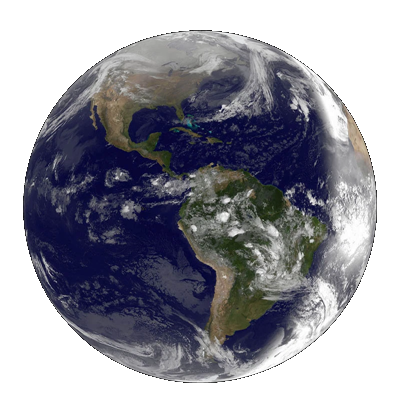
Three concepts—interconnectedness, compassion, and inpermanence—suggest an ecological vision of promise and possibilities. The following paragraphs represent scientific, as well as Buddhist, perspectives—converging in a common vision of harmony and balance for our planet.
Flower Garland Sutra (known as Avatamsaka Sutra—circa 3rd or 4th century CE)~“Everything in this universe is enmeshed together like the lines and ties of a fisher’s net. To think that any part can stand alone is as foolish as it is to think that one small knot in a fisher’s net can catch a fish. Flowers do not bloom, nor does a leaf fall independent of causes and conditions. All things in the universe are interdependent in this ocean of constant change. This is the one thing that does not change.”
Gyomay Kubose (1905-2000)1 ~ “Only when we become one with nature will we be able to solve our problems. When one attains perfect harmony with nature, he becomes one with it. It is to live like the blooming of the flowers, the shining of the sun. It is to truly be oneself.”
Thich Nhat Hahn (1926-)~ When we suffer, our planet suffers—when the planet suffers, we suffer. The Buddhist monk Thich Nhat Hahn calls this connection, “interbeing.” Today, Earth’s suffering is overwhelmingly apparent—deforestation of the rain forests, pollution of the air and the oceans, and the eradication of entire species. Global warming and climate change are no longer seriously being debated. Every human being, is a citizen of the Great Web of Life. As such, we all share responsiblity for the health of planet Earth.
Kiyosawa Manshi (1863-1901) describes, in the following verses, the transformation of person and planet and calls each of us to action in the following verses:
“Unless
the whole world is happy
there is no happiness for me.
A person
as he grows becomes aware
first of himself, then of family
and society,
and at last, of the entire universe.
This growth of awareness was explained
by the Buddhas long ago.
They themselves grew in this
outward direction.
Our new age
is going in this direction too:
the whole world is becoming
one world, one being.
To live strongly and righteously
you must
discover the galaxy within yourself,
and remain aware of it.
Let us seek the happiness
of the whole world:
the seeking of the Way
is itself
the Way.”2
James Lovelock (1919-)~The world-renowned atmospheric scientist James Lovelock, in his book Gaia: A New Look at Life on Earth, said "The entire range of living matter on Earth, from whales to viruses, and from oaks to algae, could be regarded as constituting a single living entity, capable of manipulating the Earth’s atmosphere to suit its overall need and endowed with faculties and powers far beyond those of its constituent parts."
Indigenous peoples speak Humans and climate change are driving species to extinction at unprecedented rates. To slow or eventually reverse these declines, a study published, (Aug 9/2019), confirms what many communities have known for years: To preserve biodiversity, we must turn to indigenous peoples for guidance and management.
Albert Einstein (1879-1955) said, "A human being is a part of the whole, called by us the Universe, a part limited in time and space. He experiences himself, his thoughts and feelings as something separated from the rest, a kind of optical delusion of his consciousness. This delusion is a kind of prison for us, restricting us to our personal desires and to affection for a few persons nearest to us. Our task must be to free ourselves from this prison by widening our circle of compassion to embrace all living creatures and the whole of nature in its beauty."3
Akegarasu Haya (1877-1954) ~ "I am not such a limited self, conceptualized self, as to exist apart from others!"4
Rev. Gyoko T. Saito (1927-2001) "The real living life is the life of awareness that the whole world is one being. But in our everyday life, if we are not truly alive, then our life becomes conceptualized as merely part of the universe. A living being does not say, 'a part of my body is sick,' or 'a part of my heart is stopping,' or 'only my brain is enjoying something, but my heart is cold.' When we come to the real awareness that all of the world's pain is my pain and that my pain is the pain of the whole world—then our eyes are open." 5
Pema Chodron (1936-) Times are difficult globally; awakening is no longer a luxury or an ideal. It’s becoming critical. We don’t need to add more depression, more discouragement, or more anger to what’s already here. It’s becoming essential that we learn how to relate sanely with difficult times. The earth seems to be beseeching us to connect with joy and discover our innermost essence. This is the best way that we can benefit others.6
1 Reverend Gyomay Kubose, founder Buddhist Temple of Chicago, Everyday Suchness. Chicago: The Dharma House. 1967 (p.113.)
2 Nineteenth-century Buddhist philosopher, Kiyosawa Manshi (1863−1901). Life as Art. Translated by Gyoko Saito. Manuscript on file, Karida Sangha. Rio Rancho, NM.
3 Quoted in H. Eves Mathematical Circles Adieu Einstein on Cosmic Religion and Other Opinions and Aphorisms. Dover Publication, Minneola, New York. 2009. p. 97. Boston,1977.
4 Saito & Sweany, trans. Shout of Buddha: Writingings of Haya Akegarasu, Orchid Press, Chicago Ill. 1977. p 197
5 Gyoko T. Saito, manuscript on file, Karida Press, P.O. box 44803, Rio Rancho, NM.
6 Pema Chodron, When Things Fall Apart: Heart Advice for Difficult Times. Shamballa Press

Embrace the "Beautiful Vision" and move from thought to action to transformation by exploring the many opportunities on our Eco-Buddhism page—from Butterfly Buddhism to reforestation and regenerative farming.